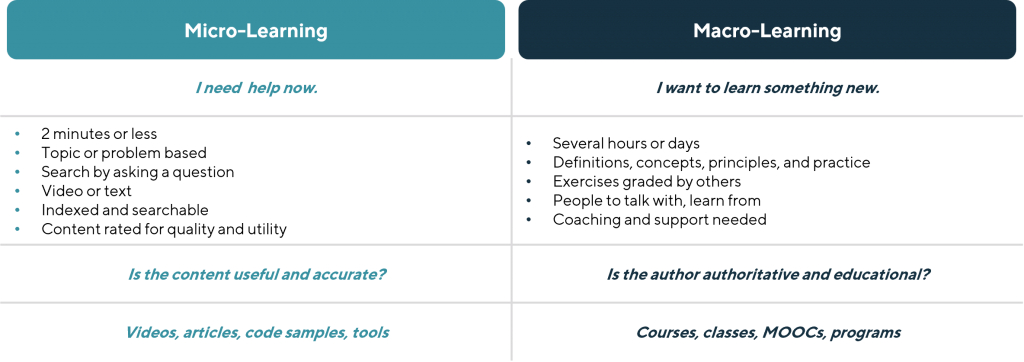How many times have we been told that our attention span has reached that of a goldfish? Luckily, it hasn’t been scientifically proven, but we do find that our concentration is no longer what it once was. It has been influenced by the digital era and by the speed of information circulating. Our attention drops if the timeline is too long – we want everything immediately, requiring answers to current problems with an immediate response. That’s why corporate learning had to change course and introduce shorter content at high frequency. Say hello to micro-learning.
What’s micro-learning?
The term explains itself: micro = small – learning = learning. In a nutshell, it’s a training method delivered in a fast and flexible way. The content is delivered in a few minutes and is assimilated by the learner at their own pace thanks to special digital formats. Compared to methods we know, micro-learning is incredibly fast and key ideas are captured rapidly. A half-hour video or a two-hour e-learning module, although they might seem fast, are not part of such an approach. Let’s distinguish macro-learning from micro-learning, grasping the difference between “I would like to learn something new” and “I want it now”, moving from “I learn in a few hours/day” to “it takes me two minutes or less”1.

Micro-learning and its benefits
It is obvious that the speed of micro-learning brings countless benefits to corporate training. First of all, it’s a simple method to develop and maintain. Having the content divided into small components also allows them to be updated and combined, saving time and money. In addition, it’s a flexible solution more in line with the habits of modern workers, embracing the philosophy “learning in the flow of work”. Learners follow entertaining micro-stages that can be managed independently, but above all can reach excellent results thanks to the engagement created.
Micro-learning and its formats
But what are the formats that allow you to deliver concise and stimulating content over a typical day? There are many formats, but those more functional to micro-learning exploit effectiveness and brevity. They always offer one key idea per module, which goes straight to the point with visual content, little text and concepts that are reinforced at each step. Among the most common are videos and short e-learning sessions (which last a few minutes), podcasts and webcasts with direct impact. Then there are some formats which are even more interactive where user involvement is the focus; digital practical modules, quizzes, or competitive activities, mini-games, simulations and even interactive infographics. With the use of such concise and effective content one thing is certain – “less is more”.
Small steps for big growth
To better explain micro-learning we could use the analogy of a dinner: if you eat a lot at one sitting you will certainly be full, but you will be just as full and maybe feel lighter by enjoying the meal in small bites. There’s nothing more functional than savouring professional growth step by step, measuring one’s results consistently and flexibly. Micro-learning represents a dynamic approach that reflects the modern worker’s way of thinking, working, and behaving and is an element of the most innovative digital training strategies on the market.
References
1 Josh Bersin (2019)


